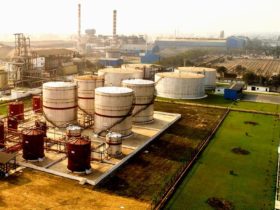Indian cement industry is part of the eight core industries, which are closely linked to the nation’s economy and benefit immensely when the economy recovers or is on an upward trajectory. Likewise, the cement industry gets affected during an economic downturn. So, the
sector is cyclical.
For a developing economy like India, which is at an inflection point with increasing urbanisation and government’s impetus in improving the country’s infrastructure, cement industry and companies in the sector hold immense potential. Many companies are ramping
up their capacity to produce more cement to meet expected higher demand in the future.
India is already the second largest producer of cement in the world, second only to China. India commands 7% of the total installed capacity in the world. The country produced about 329 million tonnes (MT) of cement in FY20 and its production is forecasted to touch 381 MT in the fiscal year 2022. Currently, India’s capacity to produce cement is more than 500 MT.
This production capacity is only going to rise in the future as many cement companies are on an expansion spree, which are evident from a lot of news reports. For instance, country’s largest cement producer UltraTech Cement recently announced an investment of Rs 5477 crore to increase its total production output to 136 MT per annum. Other smaller players like Ramco Cements, JK Cements and Ambuja are also eagerly scaling up their production capacity.
However, credit rating agency ICRA in its recent report said cement production in April and May fell 11% and 18%, respectively, due to lockdown restrictions and less activity. It also revised volume growth rate to 10% to 12% in FY22, from earlier estimation of 15%. It also
said the financial strength of cement companies are expected to remain stable, given their healthy liquidity condition and positive cash flow.
Another report from India Ratings (Ind-Ra) said cement volumes improved sequentially by about 20% in June as lockdown restrictions eased and on higher demand. The report said continued rise in input costs due to higher prices in pet coke, coal and diesel prices are likely to have a moderate impact on EBITDA/MT measure in Q1 of FY22.
The report added that there was a significant release of working capital in FY21 for cement companies, driven by higher payables and lower inventory. Though the sector’s net working capital declined to 5% of its sales in FY21, the sector’s working capital situation is expected to improve, helped by revenue growth and decrease in payables.
Meanwhile, a leading investment group CLSA said in its report that they expected demand to grow higher than real GDP, led by strong housing development and infrastructure push. It estimated the cement sector’s EBITDA to have a 15% CAGR from FY21 to FY24. It also
projected volume to grow at 9% CAGR and profit 5% over FY21-24.
All these positive outlook augurs well for cement companies and we will discuss a few companies, which are likely to benefit in the next blog.





